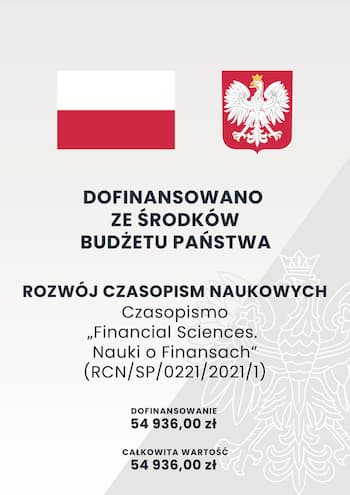Issues
Click a year to expand it.
40 Points
on Ministry of Education and Science journal evaluation list of 2024

Search results for query: Nagy
Sort by: Relevance Author: Ascending Descending Year: Ascending Descending
- Notions and expectations related to work and jobs among first year university students
Author: Adrian Nagy, Veronika Liskuné Vathy
See Issue Contents: fins.2019.4
Abstract:Demands concerning the labor market in Hungary tend to change these days faster than ever. It can be seen even in the plans and expectations of students enrolled in higher education institutions. In our research project, we have tried to find answers to the following questions: What kind of work experience did students have when they started their university studies in the 2019/2020 academic year? What jobs do they foresee for themselves in the future? What kind of salary do they expect to get for this, and what sort of considerations and persons influence them in the process of choosing a workplace? Furthermore, do they wish to live and work in Hungary or in another country? During the course of our survey, we used a questionnaire, for the analysis of which we completed correlation analyses and cross-tab(ulation) analyses among other things. After the evaluation of the findings and results, we may state that the majority of the students in the sample do have some work experience. Furthermore, the criteria influencing their choice of work(place) are also presented
- Level of financial literacy of academic youth from rural areas in the Visegrad Group countries
Author: Monika Szafrańska
See Issue Contents: fins.2019.3
Abstract:The aim of the study is to determine the level of financial literacy of academic youth from rural areas in the V4 Group countries, as well as to compare the results obtained with the level of financial literacy of young people from cities. The source of data used for analysis and inference were primary information obtained from own research (PAPI method, 900 people). The research used a set of questions to assess the level of financial literacy of adults proposed by the OECD INFE. In addition to primary sources, secondary sources were also used to achieve the goal. The measures of descriptive statistics and one-way analysis of variance (F) were used. The level of financial literacy was determined at the medium level, which may indicate the low effectiveness of financial education measures implemented at different levels of education. The component of financial literacy where students from rural areas had the lowest scores was basic financial knowledge. Only 43% of people from rural areas achieved the minimum target score
- Estimation of the Cost in a Paediatric Radiology Service Using Time-Driven Activity-Based Costing (TDABC)
Author: Silvana Secinaro, Valerino Brescia, Aurelio Secinaro, Davide Calandra
See Issue Contents: fins.2021.2
Abstract:Cost estimation is crucial for health accounts analyses in developed and develop- ing countries. This study aims to determine a methodology on the issue of costing systems and costing methods applicable to all health services carried out on a large scale that by their nature have a limited variability of resources (time, materials, human resources, etc..). We use time-driven activity-based costing (TDABC). The average time of health activities has been estimated within the direct observation of the activities and interviews in a paediatric radiology service. Direct and indirect costs have been calculated considering the price per minute for each health service category. TDABC allows calculating the practical expenses of radiology services. This method reveals a higher expenditure than what is reimbursed by the national health service. The empirical study shows high costs for CT and Thoracic spine radiology under sedation, which the national health system does not consider. TDABC can be used by health managers to evaluate the level of costs and to compare the internal results with the reimbursement tariffs from the national health service. This method should be in- cluded gradually as a tool of costs management and considered by policymakers and health managers.
- Strong ESG risk management as a way to improve organisational resilience in times of crisis: an analysis of WIG-ESG index constituents
Author: Ulyana Zaremba
See Issue Contents: fins.2023.1
Abstract:During the last decade sustainable investment practices have evolved substantially. ESG reporting is moving seamlessly from voluntary to mandatory. By investing in companies that score high in ESG rankings, investors hope for the organisation's resilience to the crisis and higher returns. Due to the dynamic development of socially responsible investing both in Poland and worldwide, new indices using ESG screening criteria are being designed, which in turn are the underlying instrument for structured products. The aim of the study was to analyse the constituents of the newly created WIG-ESG index and to discuss its performance and organisational resilience in relation to ESG risk exposure and management. The research showed that the criteria for inclusion in the WIG-ESG index should be amended to recognise companies that care about strong ESG risk management and exclude those with negligible ESG efforts. The second important issue is eligibility for inclusion. If all companies are eligible to be included in the index (ESG testing as a condition for inclusion), this will reduce the rotation of the index's constituents and allow the relationship between a company's ESG score after each update and its long-term performance to be explored.
Newsletter






